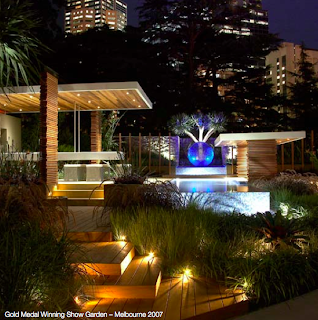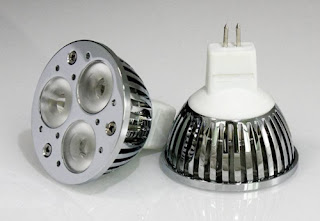1. What is the actual difference between lights of different colours?
- The primary colors are red, blue, and green. When all three are added, the full extent is present and the light is understood as "white". "Primary colors of light" can refer to the seven distinct wavelength ranges that exist in white light. Various combinations of wavelengths are present in colored light. The colours of objects are the result of the object surface absorbing one or more wavelengths, so that the reflected light does not contain all colors.
2. Define the following lighting terms: ambient light, direct light diffuser, luminosity, energy efficiency, watts
Ambient light: The soft indirect light that fills the volume of a room with illumination. It softens shadows on people's faces and creates an inviting glow in the room.
Direct light diffuser: Direct light diffusion is the scattering of direct light by making it pass through a non-transparent material or by bouncing it off a semi-reflective surface. Photographers to create “softer” light commonly use light diffusion. This is more flattering to photography subjects and casts fewer harsh, distracting shadows.
Luminosity: Luminosity is the total brightness of a star or other astronomical object. It is expressed in Watts and represents the total amount of energy that the object radiates each second over all wavelength regions of the electromagnetic spectrum. Luminosity is a physical property of the object and does not depend on the distance it is being observed from.
Energy efficiency: The most efficient products require the least energy to generate the most output. For example, compact fluorescent light bulbs use far less energy than typical incandescent lights while producing the same brightness; therefore they are more energy efficient. Engineers compute energy efficiency using a ratio, written as a decimal between 0 and 1.
Watts: The watt (symbol: W) is a derived unit of power in the International System of Units. It is the unit for measuring electrical power. It defines the rate of energy consumption by an electrical device when it is in operation. The energy cost of operating an electrical device is calculated as its wattage times the hours of use.
3. Comment on Global warming
Global warming is a gradual increase in the overall temperature of the earth's atmosphere generally attributed to the greenhouse effect caused by increased levels of carbon dioxide, CFCs, and other pollutants. Trapping excess carbon in Earth’s atmosphere causes climate change. This trapped carbon pollution heats up, altering the Earth's climate patterns. The largest source of this pollution is the burning of fossil fuels (such as coal and oil) for energy. Decades of climate science have found that if we fail to reduction carbon pollution, climate change will have profound impacts on our planet. Climate change isn’t just a temperature change. Australia’s environment and economy are particularly vulnerable to the effects of climate change. Some of these effects are already occurring.
4. How can the modern home become more energy efficient with regard to lighting?
Lighting can be responsible for up to 50% of energy costs. Good lighting does more than just illuminate an area. It can help homes with a variety of things like reduce running costs, improve the working environment, improve safety, improve aesthetics, improve colour rendering and reduce greenhouse gas emissions. Building automation systems can be installed to automatically control lights within buildings. These systems can operate on timers, motion detectors and other inputs to remove human error – for example, somebody forgetting to switch a light off – from the process.
5. Research a modern-day lighting designer and comment on their contribution to the design world.
ME Lighting design, manufacture and install creative lighting solutions for indoor and outdoor living. Their new generation LED lighting is extremely versatile and can be used to provide many new and innovative solutions for indoors and for garden and landscape lighting. They have a wide range of LED lights to suit all your lighting needs. Application for their energy efficient creative lighting include:
• Strip Lighting (waterproof; non-waterproof)
• Water Features
• Down lights (indoor; outdoor)
• Paths/Decks/Stairs
• Trees & Plants
• T8 LED tubes
• Pool Landscapes
• MR16 replacement globes
• BBQs & Tables
• Traditional globe replacements
• Artwork
• Day Beds and more....
Here are some examples of ME lighting design projects:



Evaluation
I am very delighted over my LED eco lamp design because to be honest I thought there would have been a lot more problems to my design and things that wouldn’t be able to be solved but nothing like that happened! If there were tiny problems I was able to solve them in minutes. My lamp is standing up, producing light and stable.
Function
My LED eco lamps role to light up have done what it was designed to do. There is no problems with the device and doesn’t need any mending when the light is to be turned on. If I could improve something it would be to have a remote or switch on the cord to improve its working ability to be switched on instead of having to switch it on in the wall.
Aesthetics
My LED eco lamp is modern and up to date in the modern world industry. It is shaped very smartly and twenty-first-century. It was something to stabilize it which is the wood on the side which could be black but can be used and blend in with a lot of things. The shape is very soft and sharp at the same time. It could be used for peaceful things or very important functions.
Ergonomics
My LED eco lamp is very ergonomic. It gives off the right amount of light for a desk lamp, it isn’t to in your face bright that it blinds you but something that provides light that you could work with. There is nothing I would change because it is very ergonomic and easy to work with. Its also not to big so if there was a small desk it would fit perfectly.
Economics
To make my LED Eco Lamp the total cost was $15.75, with:
• Aluminum at $2.40 each
• Jarrah base at $2.40 each
• Heat shrink at $6 per 1 meter each
• L.E.D strip at $195.00 per 5 meters
• Plastic at $0.45
• Cord at $2.80
To make the lamp it took around 8-9 hours with 9 lessons. If I were to make the LED eco lamp again I would be quicker and more efficient with making it because I would know what to do and if there were any things I made a mistake with I could fix it easily and quickly. I would estimate the time it would take me to make it again to be 3-4 hours. The selling price I believe you could make a profit out of and be reasonable I would sell it at $25.00. This means I would make a profit of $9.25 but taking away the transport and packaging it would be around $5. I think this is good because it I sell a lot of them I would make a good business and stable profit.









